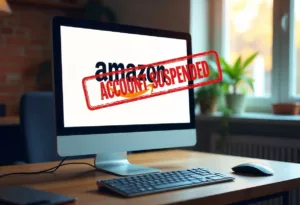Shipping directly to Amazon Fulfillment by Amazon (FBA) warehouses can streamline your logistics, reduce handling times, and cut costs. However, setting up the process requires careful planning and an understanding of Amazon’s “Send to Amazon” workflow. In this guide, we’ll walk you through every step of the FBA shipping process and explore how tools like Ailumia SellerHub can revolutionize your logistics management.
Why Ship Directly to Amazon FBA?
Shipping inventory directly from your supplier to Amazon’s warehouses offers several advantages:
- Time Savings: Skip the need for middleman inspections or additional warehouse handling.
- Cost Efficiency: Reduce transportation and labor costs associated with interim stops.
- Faster Fulfillment: Get products into Amazon’s system quickly, improving delivery times for customers.
Common Concerns
Many sellers hesitate to ship directly to FBA because:
- Quality Assurance: They want to inspect products for defects or inconsistencies before they reach Amazon’s customers.
- Storage Fees: Limiting the stock sent to FBA helps control fees for long-term storage.
- Custom Packaging or Labeling: Sellers may need to bundle products or prepare them to meet Amazon’s requirements.
If these concerns apply to your business, tools like Ailumia SellerHub can provide robust solutions to monitor shipments and track FBA compliance without sacrificing efficiency.
Steps to Set Up Your FBA Shipment
Amazon’s “Send to Amazon” workflow simplifies the shipping process, making it more intuitive and faster for sellers. Follow these steps to ship your products directly to Amazon’s warehouses:
Step 1: Access Your Inventory
Log in to Amazon Seller Central and navigate to the Manage All Inventory section. Locate the product you wish to ship, and from the drop-down menu next to it, select Edit > Send/Replenish Inventory.
Step 2: Enter Packing Details
If this is your first shipment for the product:
- Provide packing details such as units per box, box dimensions, and weight.
- Create and save a packing template for future shipments, saving time and reducing errors.
- If you’re using a new packaging setup, create a fresh template for updated configurations.
For international shipments, additional information may be required for customs purposes, which can also be streamlined using Amazon’s Global Logistics option.
Step 3: Confirm Shipping Preferences
- Choose between Small Parcel Delivery (SPD) for individual boxes or Less Than Truckload (LTL) for palletized shipments.
- Confirm the carrier, shipping charges, and preferred shipping date.
- Accept the shipping charges to lock in the logistics arrangement.
Step 4: Print Labels and Ship
- Print all necessary labels, ensuring both the FBA barcode and carrier label are clearly visible.
- Coordinate with your supplier or freight forwarder to apply the labels and arrange delivery to the designated FBA warehouse.
- Track your shipment via the Shipping Queue in Seller Central.
How Much Does It Cost to Ship to FBA?
Shipping costs vary based on factors like shipment size, weight, origin, and destination. On average, sellers pay:
- $0.25–$0.30 per pound for domestic shipments.
- Higher fees for international shipments due to customs and handling.
2024 Inbound Placement Fees
Starting March 2024, Amazon will introduce new inbound placement service fees:
- Standard-sized products: $0.21–$0.68 per unit.
- Large bulky items: $2.16–$6.00 per unit.
To minimize costs:
- Consolidate shipments whenever possible.
- Use Amazon-partnered carriers, which typically offer discounted rates.
How Ailumia SellerHub Enhances FBA Logistics
Ailumia SellerHub is a powerful tool designed to help sellers navigate the complexities of FBA logistics. Here’s how it can simplify your shipping process:
1. Shipment Monitoring
Track every step of your shipment, from supplier dispatch to warehouse delivery, in real-time. With Ailumia SellerHub, you’ll receive alerts for delays, misplaced items, or discrepancies in shipment quantities.
2. Compliance Assurance
Amazon has strict guidelines for packaging, labeling, and shipping. Ailumia SellerHub provides tools to:
- Verify compliance with Amazon’s standards.
- Detect errors in labeling or box content details before shipping.
3. Cost Optimization
Analyze shipping costs using SellerHub’s data insights to identify the most economical routes and carriers. This is especially useful given the new inbound placement fees and rising transportation costs.
4. Inventory Insights
Avoid overstocking or running out of inventory by monitoring real-time stock levels across Amazon’s warehouses. SellerHub integrates with your FBA account to provide actionable insights, ensuring smooth inventory management.
5. Supplier Coordination
Coordinate with your suppliers seamlessly by sharing packing templates, box configurations, and shipping instructions directly from the platform.
Shipping Directly from China to FBA
Amazon Global Logistics is an excellent option for sellers sourcing products from China. It integrates directly with the “Send to Amazon” workflow, allowing you to:
- Get competitive shipping quotes.
- Book ocean freight shipments directly in Seller Central.
- Manage customs documentation with ease.
By using Ailumia SellerHub, you can further optimize this process:
- Automatically track shipments across international borders.
- Monitor customs clearance status to avoid delays.
- Communicate with suppliers for seamless coordination.
Best Practices for Shipping to Amazon FBA
To maximize efficiency and minimize costs, consider the following tips:
1. Optimize Packing
- Use consistent box sizes and configurations for repeat shipments.
- Take advantage of Amazon’s packing templates for faster processing.
2. Consolidate Shipments
Reduce per-unit shipping costs by sending larger shipments, especially for high-demand products.
3. Leverage Partnered Carriers
Amazon-partnered carriers, like UPS, often provide the most competitive shipping rates for domestic and international shipments.
4. Use Technology
Tools like Ailumia SellerHub are invaluable for streamlining logistics, tracking shipments, and ensuring compliance with Amazon’s ever-evolving standards.
Final Thoughts
Shipping directly to Amazon FBA doesn’t have to be overwhelming. By following the steps outlined in this guide and leveraging tools like Ailumia SellerHub, you can simplify your logistics process, reduce costs, and ensure a seamless experience for both you and your customers.
Ready to ship like a pro? Start using Ailumia SellerHub today to optimize your FBA operations and stay ahead in the competitive Amazon marketplace.








